Wednesday, August 26, 2009
Therefore, as long as women are compelled by convention or decency laws, to wear bathing suits which are either one piece or which otherwise cover their chests, men should do the same. You know, in the name of modesty and whatnot.
Frills and Fun
One piece bathing suits are actually rather a lot of fun. Some come adorned with various frills, which accentuate parts of the body, take those bathing suits for instance, which have a cute little frill over the behind. This can be considered a means to making the waist look small or the butt look big, either way its a great deal more fun that a unitard style piece of fabric wrapped around your wet frame.
Other bathing suits have ruching about the place to create lines which flatter the form. Being male you may be blessed with a more swim suit worthy frame than some women who fight cellulite and unseemly bulges, but If you're looking for a swimsuit that looks good on a larger frame, try control swimsuits, these are suits which feature similar technology to SPANX panties and other such garments, and are remarkably effective at reigning in an out of control gut.
So Many Swimsuits, So Little Time
One piece swimsuits come in a wide range of cuts, colors and styles, which means that you can have a different and pretty swimsuit every day of the summer if you so desired. Floral prints are in this year, as is the hacking of most of the fabric, leaving large holes in the front, back and sides of the swimsuit, where flesh can alluringly show through. These types of swimsuits are commonly referred to as “Monokinis”, because although they are one piece swimsuits, they really might as well not be.
Modesty and Decency in a One-Piece
If you want to slip into the world of the one piece, but don't want to appear to be immodest, it's always possible to team up a one piece swimsuit with a pair of board shorts or something like that. Doing so ensures that your man parts are not immodestly on display, and you get to enjoy the tight feel of wet Lycra sliding over your torso, just like the ladies do.
Sunday, August 23, 2009
Swimwear / Bikini 2009 Fashion Trends
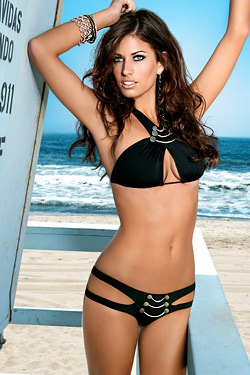

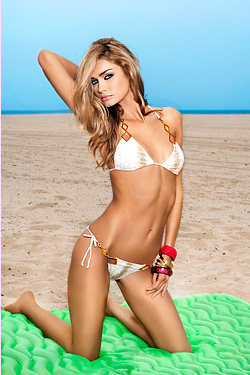
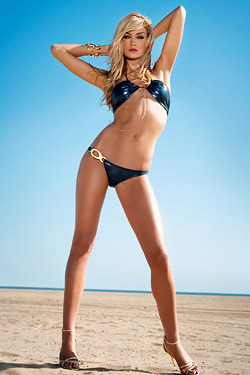
Bright colours are very modern, but swimming suits in black or black and white
look very refined. Among the key trends is also the usage of metallic materials.
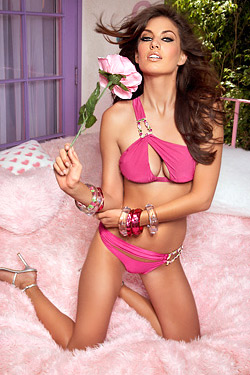
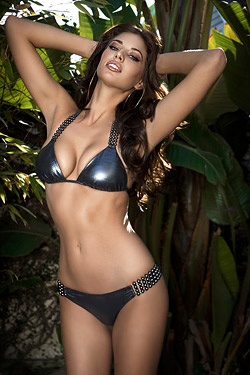
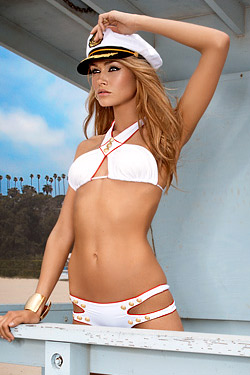
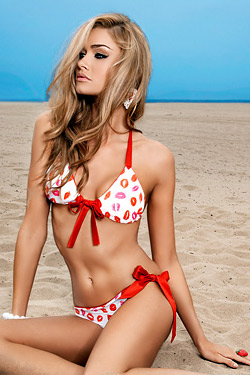
In many of the world's leading brands' offers we can see a combination of all
current trends of the season.
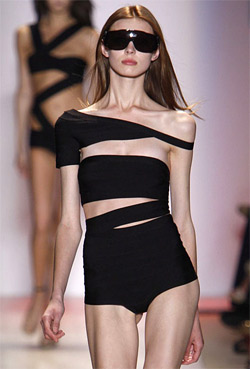
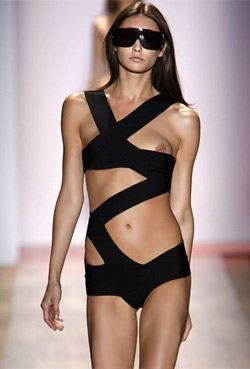
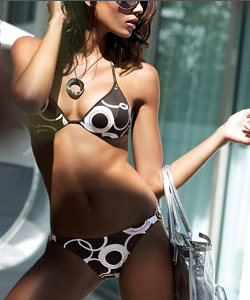
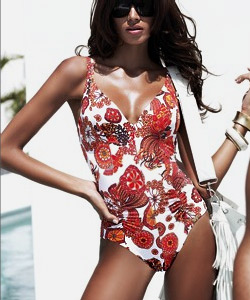
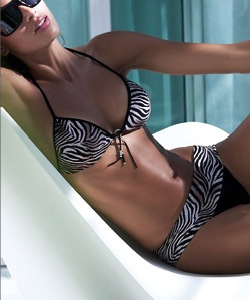
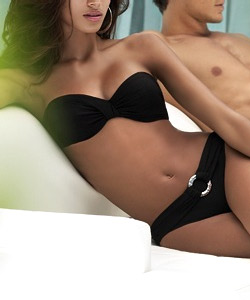
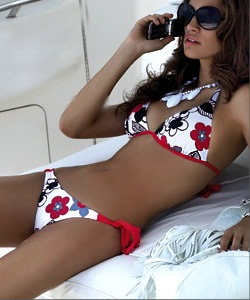
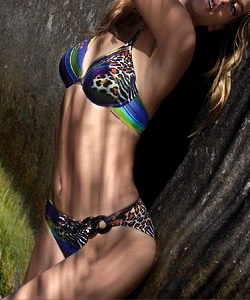
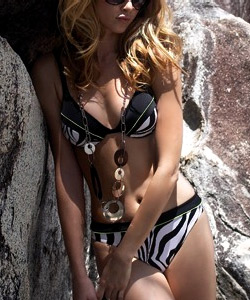
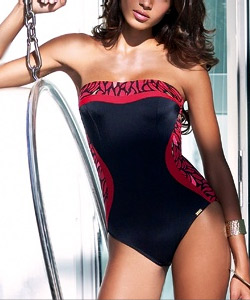
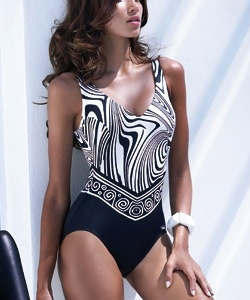
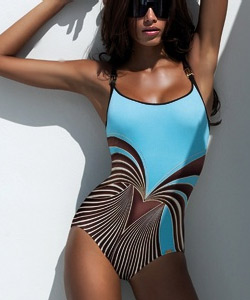
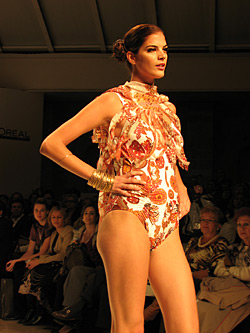
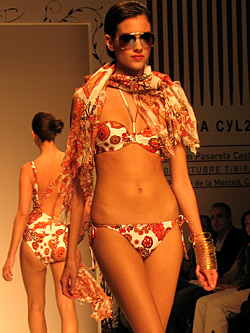
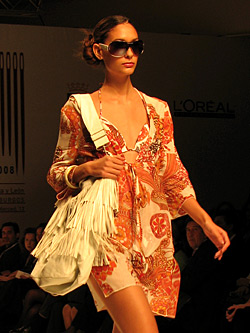
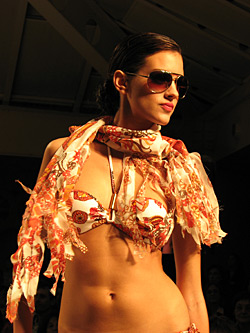
As an impressive addition to the swimming suit many brands offer dresses, shawls
and mantles from sheer fabrics.
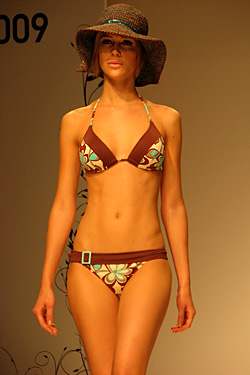
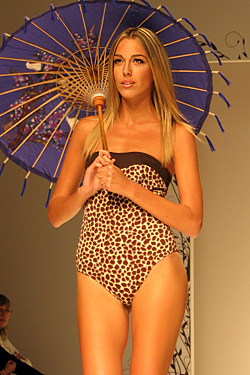
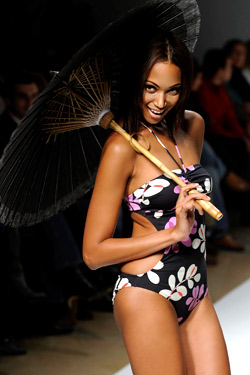
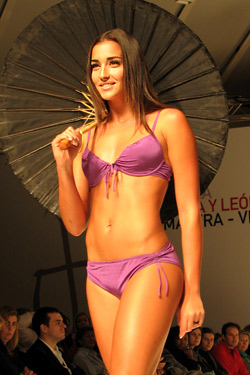
Always combine the swimming suit with the appropriate accessories - jewelry,
beach bag, sun glasses. Don't forget that the better you look, the better you
feel. We wish you an unforgettable and full of pleasant emotions summer!
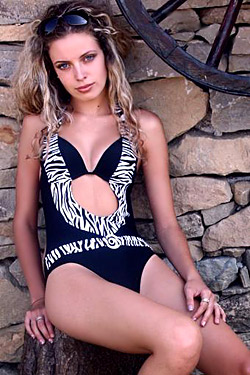
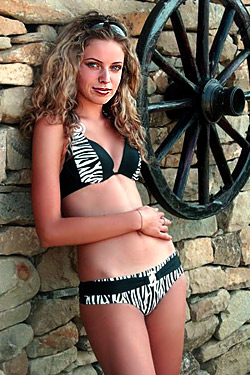





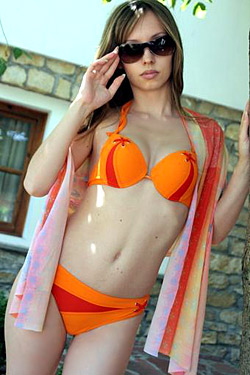
Photos:
1. - 8. Beach Bunny models
9. - 10. Max Azria models
11. - 24. ORY models
25. - 28. Teleno models, shown on Castilla y Leon fashion week
29. - 36. Lizabel models
Published on 12/05/2009
References:www.bgfashion.net
One-Shoulder Bikinis / Monokinis

if you have a well-built and beautiful body, any kind of a swimming suit would fit you, but imagine how much attention you will get, if you show up on the beach in an attractive model of the fashion designers' latest collections. Swimming suits with one shoulder-strap are a hit this year, as well as full-body swimming suits with lots of complicated cuts and various shapes.

1. Marios Schwab married the one-shouldered bikini with the cutaway bikini trend on his Spring/Summer 2009 runway at London Fashion Week. This particular piece also uses Summer florals taking what a risqué bikini to a girl level. It's cut and under-strapping make this a particular good piece for smaller chested girls.
2. Victoria's Secret included a single-shouldered piece in their 2008 line-up. More notable for it's side-tie briefs, this attention grabbing feature makes it a good bikini for girls whose legs are stand out.
3. A one-shouldered monokini was naturually used on Hervé Léger by Max Azria's Spring/Summer 2009 catwalk but sadly with no-where near the same sex appeal as other pieces in the collection. Read cut-away swimwear below for more
4. Under his own name Max Azria also sent a single-shouldered monikini down the catwalk, again pairing it with the cut-away trend. This particular piece stands out for it's use of a buckle clasp to join the body fabric with the shoulder. As with piece 3, smaller breasted girls are probably to avoid these particular cuts as they their black fabric will need some filling out to look best.
5. While not truly a one-shoulder monokini, Gottex's piece from their Spring/Summer 2009 collection has the same visual effect. It's clever halter neck also allows for a more revealing but and better support.
6. Finally, if you still have access to 2008 pieces; Gucci debuted their sophisticated take on the one-shouldered monokini as a part of their Spring/Summer 2008 collection.
Bikini variants

Bikini variants
bikini has spawned many stylistic variations. A regular bikini is defined as a two pieces of garments that cover the groin and buttocks at the lower end and the breasts in the upper end. Some bikinis can offer a large amount of coverage, while other bikinis provide only the barest minimum. Topless variants may still be considered bikinis, although technically no longer two-piece swimsuits. Along with a variation in designs, the term bikini was followed by an often hilarious lexicon including the monokini (top part missing), seekini (transparent bikini), tankini (tank top, bikini bottom), camikini (camisole top and bikini bottom) and hikini.Since fashions of different centuries exist beside one another in early 21st century, though it is possible to imagine a woman combining a bikini and a 1910 bathing costume.
Bikini tops come in several different styles and cuts, including a halter-style neck that offers more coverage and support, a strapless bandeau, a rectangular strip of fabric covering the breasts that minimizes large breasts, a top with cups similar to a push-up bra, and the more traditional triangle cups that lift and shape the breasts. Bikini bottoms vary in style and cut and in the amount of coverage they offer, coverage ranging anywhere from complete underwear-style coverage, as in the case of more modest bottom pieces like briefs, shorts, or briefs with a small skirt-panel attached, to almost full exposure, as in the case of the thong bikini. Skimpier styles have narrow sides, including V-cut (in front), French cut (with high-cut sides) and low-cut string (with string sides).In just one major fashion show in 1985 were two-piece suits with cropped tank tops instead of the usual skimpy bandeaux, suits that are bikinis in front and one-piece in back, suspender straps, ruffles, and daring, navel-baring cutouts.Subsequent variations on the theme include the monokini, tankini, string bikini, thong, slingshot, minimini, teardrop, and micro.
A bikini or two piece is a women's
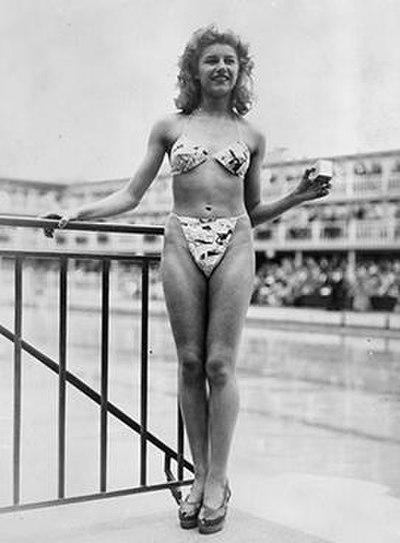
A bikini or two piece is a women's swimsuit with two parts, one covering the breasts, the other the groin (and optionally the buttocks), leaving an uncovered area between the two (optionally in the case of the Tankini). It is often worn in hot weather or while swimming. The shapes of both parts of a bikini resemble women's underwear, and the lower part can range from revealing thong or g-string to briefs and modest square-cut shorts. Merriam–Webster's Collegiate Dictionary (11th edition) describes the bikini as "a woman's scanty two-piece bathing suit", "a man's brief swimsuit" and "a man's or woman's low-cut briefs".
The bikini, which shocked when it appeared on French beaches in 1947, dates back to antiquity, in Çatalhöyük and the Greco-Roman world.The modern bikini was invented by French engineer Louis Réard in 1946. He named it after Bikini Atoll in the Pacific, the site of the Operation Crossroads nuclear weapon tests in July that year. The reasoning was that the burst of excitement created by it would be like a nuclear device. The monokini, a bikini variant, is a back formation from bikini, interpreting the first syllable as the Latin prefix bi- meaning "two" or "doubled", and substituting for it mono- meaning "one".Jacques Heim called his bikini precursor the Atome, named for its size, and Louis Réard claimed to have "split the Atome" to make it smaller.
From a 1949 Los Angeles Times report: "The bathing beauty queen—blond Bebe Shopp, 18, of Hopkins, Minn.—got an enthusiastic welcome in Paris, but she said she hasn't changed her mind about French swim suits. ... 'I don't approve of Bikini suits for American girls,' Bebe told her French interviewers. 'The French girls can wear them if they want to, but I still don't approve of them on American girls."
The bikini is perhaps the most popular female beachwear around the globe, according to French fashion historian Olivier Saillard due to "the power of women, and not the power of fashion". As he explains, "The emancipation of swimwear has always been linked to the emancipation of women."By the mid 2000s bikinis had become a US$811 million business annually, according to the NPD Group, a consumer and retail information company.The bikini has boosted spin-off services like bikini waxing and the sun tanning industries
The history of the bikini is a checkered one. The earliest evidence of a bikini-like costume dates back to the Chalcolithic era, as the mother-goddess of Çatalhöyük, a large ancient settlement in southern Anatolia, is depicted astride two leopards wearing garb akin to a modern bikini.[1] Two-piece garments worn by women for athletic purposes are on Greek urns and paintings dating back to 1400 BC.Active women of ancient Greece wore a breastband called a mastodeton or an apodesmos, which continued to be used as an undergarment in the Middle Ages.[9] While men in ancient Greece abandoned the perizoma, partly high-cut briefs and partly loincloth, women performers and acrobats continued to wear it. Artwork dating back to the Diocletian period (286-305 AD) in Villa Romana del Casale, Sicily depicts women in garments resembling bikinis in mosaics on the floor.The images of ten women, dubbed the "Bikini Girls", exercising in clothing that would pass as bikinis today, are the most replicated mosaic among the 37 million colored tiles at the site. Archeological finds, especially in Pompeii, show the Roman goddess Venus wearing a bikini. A statue of Venus in a bikini was found in cupboard in the southwest corner in Casa della Venere, others were found in the front hall.[14] A statue of Venus was recovered from the tablinum of the house of Julia Felix,[15] and another from an atrium at the garden at Via Dell'Abbondanza.
The modern bikini started to emerge again in 1907, when Australian swimmer and performer Annette Kellerman was arrested on a Boston beach for wearing a form-fitting one-piece which became an accepted swimsuit for women by 1910. Pictures of her were produced as evidence in the Esquire magazine versus United States Postmaster General legal battle over indecency in 1943. In 1913, inspired by the introduction of females into Olympic swimming, the designer Carl Jantzen made the first functional two-piece swimwear, a close-fitting one-piece with shorts on the bottom and short sleeves on top. By the 1930s, necklines plunged at the back, sleeves disappeared and sides were cut away. Hollywood endorsed the new glamour with films such as Neptune's Daughter in which Esther Williams wore provocatively named costumes such as "Double Entendre" and "Honey Child".With new materials like lastex and nylon, by 1934 the swimsuit started hugging the body and had shoulder straps to lower for tanning.Burlesque and vaudeville performers wore two-piece outfits in the 1920s, and in 1932 French designer Madeleine Vionnet offered an exposed midriff in an evening gown.
By the early 1940s two-piece swimsuits were frequent on American beaches. Hollywood stars like Ava Gardner, Rita Hayworth and Lana Turner tried similar swimwear or beachwear.[21] Pin ups of Hayworth and Esther Williams in the costume were widely distributed. Finally, the modern bikini was introduced by French engineer Louis Réard and fashion designer Jacques Heim in Paris in 1946. Réard was a car engineer but by 1946 he was running his mother's lingerie boutique near Les Folies Bergères in Paris.Heim was working on a new kind of beach costume. It comprised two pieces, the bottom large enough to cover its wearer's navel. In May 1946, he advertised it as the world's "smallest bathing suit". Réard named his swimsuit the “bikini,” taking the name from the Bikini Atoll, one of a series of islands in the South Pacific where testing on the new atomic bomb was occurring that summer. Historians assume Reard termed his swimsuit the “bikini” because he believed its revealing style would create reactions among people similar to those created by America’s atomic bomb in Japan just one summer earlier.[1] Réard sliced the top off the bottoms and advertised it as "smaller than the smallest swimsuit".Réard could not find a model to wear his design. He ended up hiring Micheline Bernardini, a nude dancer from the Casino de Paris.That bikini, a string bikini with a g-string back of 30 square inches (194 cm²) of clothes with newspaper type printed across, was introduced on July 5 at Piscine Molitor, a public pool in Paris.Heim's design was the first worn on the beach, but clothing was given its name by Réard.